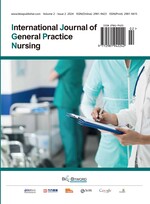Abstract
Adenomyosis refers to the endometrial glands and mesenchyme that invade the myometrium through the basal layer, and under the action of hormones, repeated bleeding, myofibrous connective tissue hyperplasia formed by diffuse or limited lesions. It is a common disease in women of childbearing age and is more common in women over 40 years of age with menstruation. In recent years, the age of onset of the disease tends to be younger, which may be related to the various uterine surgical operations in clinical work, such as abortion, childbirth, curettage, chronic endometritis, and so on. The mechanism of the disease is currently thought to be due to the invasion of the basal endometrium into the myometrium for growth, but the ectopic endometrium is immature, has reactive changes to estrogen, and is insensitive to progesterone. Its main symptoms are increased menstrual flow, dysmenorrhea, and low fertility, which seriously affect the quality of life of patients. Among them, the incidence of excessive menstrual flow is 40%–50% and the incidence of dysmenorrhea is 15%–30%. There are numerous treatments available for adenomyosis aimed at reducing menstrual flow, relieving dysmenorrhea, and improving fertility. A brief review of the various treatments available for adenomyosis in the clinic is as follows.
References
Endometriosis Collaborative Group of the Obstetrics and Gynaecology Section of the Chinese Medical Association, 2015, Guidelines for the Diagnosis and Treatment of Endometriosis. Chinese Journal of Obstetrics and Gynaecology, 50(3): 162–169.
Habiba M, Brosens I, Benagiano G, 2018, Müllerianosis, Endocervicosis, and Endosalpingiosis of the Urinary Tract: A Literature Review. Reproductive Sciences, 25(12): 1607–1618.
Zhu SA, Wang L, 2015, Progress in the Treatment of Adenomyosis. Chongqing Medicine, 44(23): 3278–3280.
Xie H, 2018, Obstetrics and Gynaecology 9th ed. People’s Health Press, Beijing, 268–269.
Chen CL, Liu P, Lv J, et al., 2002, Application of Uterine Artery Embolization in the Treatment of Adenomyosis. Chinese Journal of Obstetrics and Gynaecology, 37(2): 77–79.
Lang JH, Chen CL, Xiang Y, et al., 2018, Expert Consensus on the Treatment of Uterine Fibroids and Adenomyosis with Uterine Artery Embolization. Chinese Journal of Obstetrics and Gynaecology, 53(5): 289–293.
Liu D, Bai Y, Wang F, et al., 2019, A Study on the Efficacy and Observation of Side Effects after Placing LNG-IUS Ectopic in Uterine Adenomyosis. Journal of Practical Obstetrics and Gynaecology, 35(7): 543–546.
Lee KH, Kim JK, Lee MA, et al., 2016, Relationship between Uterine Volume and Discontinuation of Treatment with Levonorgestrel-releasing Intrauterine Devices in Patients with Adenomyosis. Archives of Gynecology and Obstetrics, 294(3): 561–566.
Li L, Leng JH, Dai Y, et al., 2016, A Prospective Study of LNG-IUS for the Treatment of Severe Dysmenorrhea Associated with Adenomyosis. Chinese Journal of Obstetrics and Gynaecology, 51(5): 424–430.
Lou JY, Huang XF, Zhang LF, et al., 2019, Second-generation Endometrial Ablation Improves the Efficacy of Levonorgestrel Intrauterine Device System in Patients with Adenomyosis. Journal of Zhejiang University (Medical Edition), 48(2): 136–141.
Maia H, Haddad C, Casoy J, et al., 2012, Effect of a Hormone-releasing Intrauterine System (MIRENA(®)) on Aromatase and Cox-2 Expression in Patients with Adenomyosis Submitted or not, to Endometrial Resection. International Journal of Women’s Health, 2012(4): 175–183.
Li L, Leng JH, Jia SZ, et al., 2016, Analysis of Unplanned Removal and Detachment of Levonorgestrel Intrauterine Extended-release System for the Treatment of Adenomyosis and its Associated Factors. Chinese Journal of Practical Gynaecology and Obstetrics, 32(11): 1088–1092.
Babbo KD, Chen ZY, Zhang XM, 2019, Progress of Pharmacological Treatment for Patients with Adenomyosis. Journal of Zhejiang University (Medical Edition), 48(2): 142–147.
Yu Q, Zhang S, Li H, et al., 2019, Dienogest for Treatment of Endometriosis in Women: A 28-week, Open-label, Extension Study. Journal of Women’s Health, 28(2): 170–177.
Neriishi K, Hirata T, Fukuda S, et al., 2018, Long-term Dienogest Administration in Patients with Symptomatic Adenomyosis. Journal of Obstetrics and Gynaecology Research, 44(8): 1439–1444.
Matshshshima T, Akira S, Fukami T, et al., 2018, Efficacy of Hormonal Therapies for Decreasing Uterine Volume in Patients with Adenomyosis. Gynecology and Minimally Invasive Therapy, 7(3): 119–123.
Philip CA, Le MM, Maillet L, et al., 2018, Evaluation of NovaSure® Global Endometrial Ablation in Symptomatic Adenomyosis: A Longitudinal Study with a 36-month Follow-up. European Journal of Obstetrics, Gynecology, and Reproductive Biology, 2018(227): 46–51.
Nakamura K, Nakayama K, Sanuki K, et al., 2017, Long-term Outcomes of Microwave Endometrial Ablation for Treatment of Patients with Menorrhagia: A Retrospective Cohort Study. Oncology Letters, 14(6): 7783–7790.
Xu LY, Yu LX, 2019, Therapeutic Effect of Treprostinil Combined with High-intensity Focused Ultrasound Ablation in the Treatment of Adenomyosis. Chinese Journal of Family Planning, 27(4): 473–475.
Qing G, Feng X, Zhen ZD, et al., 2018, High Intensity Focused Ultrasound Treatment of Adenomyosis: A Comparative Study. International Journal of Hyperthermia, 35(1): 1–5.
Zhou NB, Zhang Y, Yang WQ, et al., 2019, Influence Factors of Energy Efficiency Factors in High-intensity Focused Ultrasound Treatment of Adenomyosis. China Medical Imaging Technology, 35(11): 1712–1716.
Zhao R, Gu YC, Wang SH, et al., 2016, Observation on the Effect of Laparoscopic Wedge Resection of Uterus and Postoperative Vaginal Placement of Mannuelle in the Treatment of Adenomyosis. Shandong Medicine, 56(7): 52–54.
Harada T, Khine YM, Kaponis A, et al., 2016, The Impact of Adenomyosis on Women’s Fertility. Obstetrical & Gynecological Survey, 71(9): 557–568.
Tan J, Moriarty S, Taskin O, et al., 2018, Reproductive Outcomes after Fertility-sparing Surgery for Focal and Diffuse Adenomyosis: A Systematic Review. Journal of Minimally Invasive Gynecology, 25(4): 608–621.
Sun CL, 2016, Observation on the Efficacy of Ultra-small-dose Mifepristone in the Treatment of Patients with Adenomyosis. Journal of Practical Gynaecological Endocrinology, 3(2): 116–118.
Munro MG, 2018, Endometrial Ablation. Best Practice & Research (Clinical Obstetrics & Gynaecology), 2018(46): 120–139.
Lang JH, Leng JH, Deng S, et al., 2019, Chinese Expert Consensus on the Clinical Application of Levonorgestrel Intrauterine Extended-release System. Chinese Journal of Obstetrics and Gynaecology, 54(12): 815–825.
